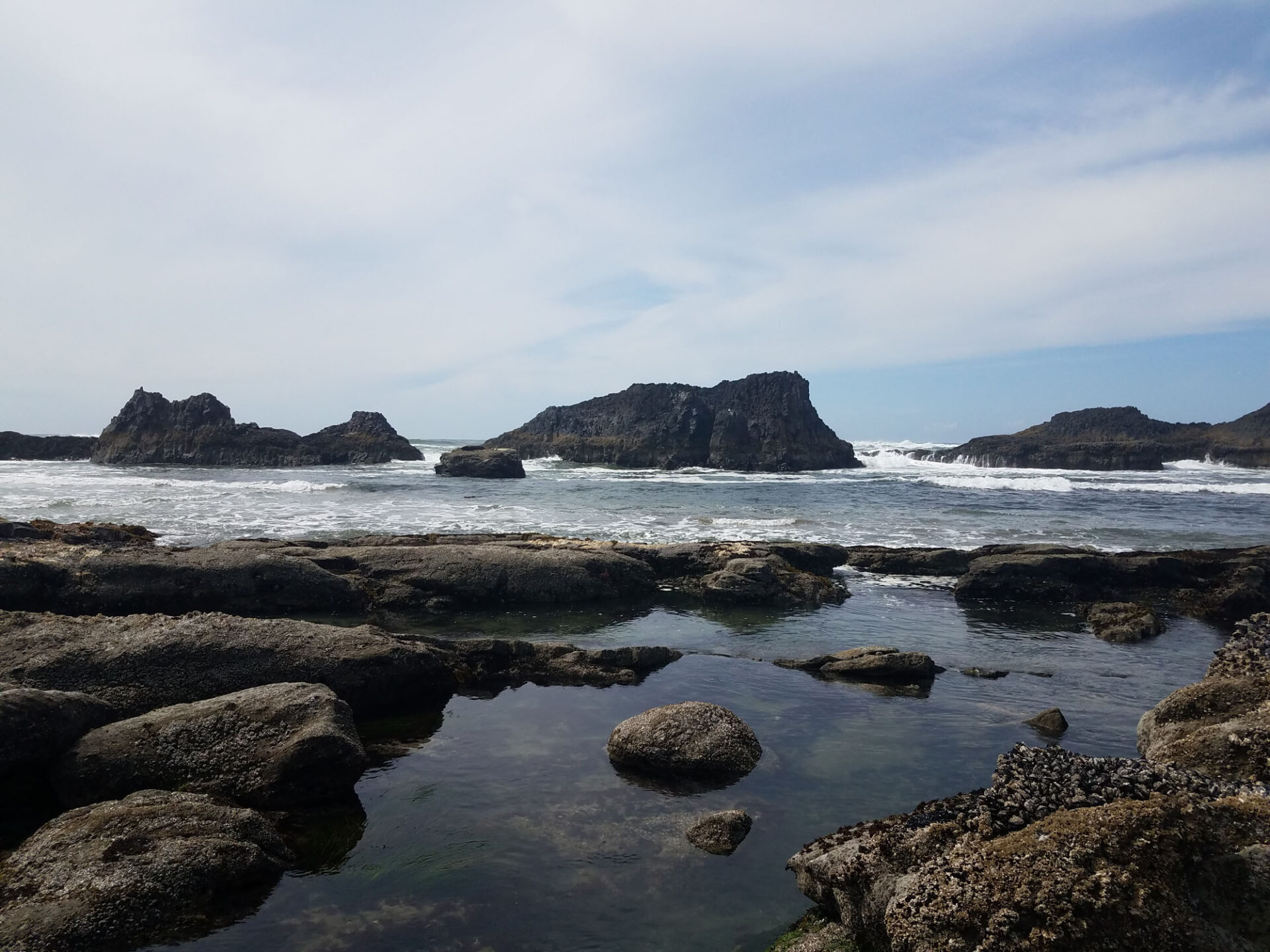

Again, these are very tasty but usually live under the sand, and you have to dig for them.

#Best tidal pools in oregon license#
If you wish to harvest, make sure you have a shell-fish license and know what you are doing!Ĭlams - also a type of “bivalve”, also in the mollusk group. “bivalve” means having two shells, which mussels have! They also are very tasty and are attached to rocks. Mussels - are a type of “bivalve”, which is a designation in the mollusk group of sea organisms. Sea anemones are related to corals and jellyfish!īarnacles - those hard things you keep walking on? Yep, that’s an animal! It’s actually related to a crab (it’s an arthopod), believe it or not! So try not to crush these guys as you are exploring. Sea anemones - while they kind of look like a plant, these are animals! They have tiny stinging cells on their many arms, which to us feel sticky, but to other animals that it eats, stuns them. Sand dollars - yep! These are also animals! Usually you just find their dried out shells on the beach, but there is actually a little animal that lives in there. There are many types of sea stars, ones with many arms and a relative called the brittle star. Sea stars - sea stars (sometimes called starfish, but they are not fish) are related to sand dollars and sea urchins. Usually the ones you find in a tidepool are very small and not ones that you would want to eat. They are related to our land-dwelling friends the slug. Sea snails - a type of mollusk that has one shell. Other examples of arthropods include land-dwelling insects. Hermit crabs - Small arthropods (an invertebrate, meaning they don’t have bones) that live in a found shell. The intertidal zone is home to many different kinds of organisms on the Oregon Coast. Why explore these areas? What kind of organisms will you find? It’s also important to look up when the tide will be coming back in, because you don’t want to risk getting stuck out on a rock with ocean suddenly surrounding you.

Therefore, the best place to go tidepooling, is in the low tidal zone, which means you have to pay attention to the tides, otherwise your fun activity could be underwater when you arrive.

It has more favorable conditions for organisms that can’t survive direct sunlight, desiccation (drying out), or changing salinity (salt concentration) for long periods of time. The low tide zone is completely submerged except during low tide, resulting in it having the greatest biodiversity of all the zones. The middle zone is where submersion and exposure are equal in amount of time and is further out from shore. This would be the zone closest to the dry land. The high tide zone is only submerged at high tide, making it dry and hot. The intertidal zone is where the land meets the ocean and can be subdivided into three different sections: high tide, middle tide, and low tide. It is illegal to collect or remove creatures from these tide pools, which are part of a protected marine garden.Tidepools are areas where water collects in the intertidal zone when the tide is out (or low). Rocks can be slippery and large waves may catch you by surprise. Use caution when exploring the rocky coastline. See the Churn from the viewing platform located alongside Highway 101, or on foot along the Restless Waters Trail.At the Devils Churn you’ll find restrooms, an information station (summer only), coffee shop and wheelchair accessible viewpoint. The pounding, exploding waters of Devils Churn are at their best during high tide and winter storms. Spouting Horn can be viewed from Highway 101 and from a wheelchair accessible observation point along the Captain Cook Trail.The Horn puts on its best show at high tide and during winter storms. The Spouting Horn is a salt water fountain driven by the ocean’s power. Access the tide pools from the Captain Cook Trail.Sturdy shoes and a walking stick are recommended tide pooling gear. Tide pools can be viewed at low tide only. The rich and varied tide pool life takes a beating with every change of the tide, but it still thrives.


 0 kommentar(er)
0 kommentar(er)
